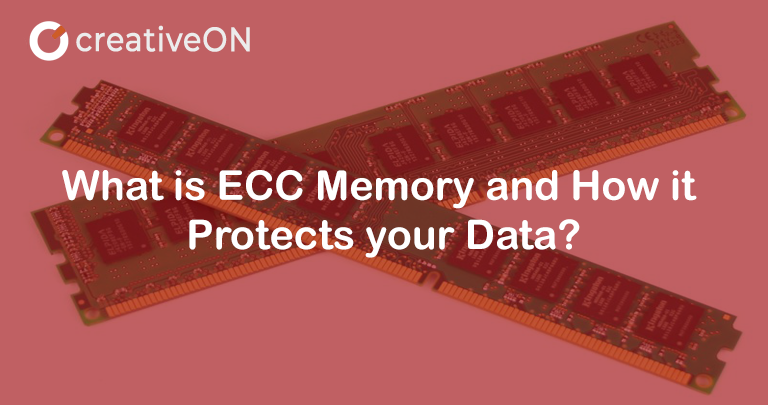ECC (Error Correction Code) is one of the types of RAM found in workstations and servers. Its main goal is to eliminate data corruption. ECC Memory has extra memory bits and controllers, which help in controlling the extra bits in the additional chip on the module. It is a very reliable memory choice. Along with other advantages, it also helps to prevent downtown and data losses. But let us first understand what ECC memory is!
What is ECC RAM?
ECC RAM and ECC Memory are often used interchangeably. On a higher level, ECC is usually referred to as a component’s ability to detect mistakes that may happen in data memory without having to employ separate computing resources for this purpose.
How does Flash Memory work?
Flash chips have many cells, and each of the cells has either of the two states, 1 or 0. The memory controller collects and combines the state of each cell into a binary sequence. This code is then translated into data on your computer system. For instance, the number 124 is expressed as 1111100 in its binary state. In the binary system, each number has a completely different binary string that has a unique value. Flash chips require electricity to function. A specified amount of power is applied depending on whether your system wants to write 0 or 1.
In volatile computer memory like RAM, the cells need a continuous supply of power or electricity to function. This is the reason RAM losses all the data when the computer is turned off. The downside to this is that outside static electricity or any such interference can cause the cells to mistakenly turn to the wrong state, drastically altering the results.
Let us look at an example of this turn and how it affects the results!
As mentioned above, 124 is equal to 1111100 in a binary number. Let us see how a single flip can change results. Consider the 1 in the second position from left is flipped as 0 due to outside interference, and it becomes 1011100, so
1111100 is 124 but
1011100 is 92
1101100 is 108
1110100 is 116
1111110 is 126
1111101 is 125
It is called a single-bit error. These memory flips can sometimes be harmless and can sometimes crash your entire system, depending on what function your computer is carrying out—the average memory stick of 8 GB experiences about 5 of these errors per hour of use. On the other hand, the effects can be undetectable for an everyday computer user. However, these errors can cause major and expensive damage to mission-specific computers or servers. Moreover, it can also cause corruption of data and a decline in functional integrity. To avoid all of this, ECC memory is vital.
How does ECC memory work?
These memory chips are expensive and specially made with a built-in controller in them that contains a parity code called Hamming Code. If one of the bits goes bad, the controller can correct it and send the corrected data back to the computer system. An algorithm is already used that writes the data in a way to let the formula match pieces of data. Hamming codes can successfully check for data consistencies with minimal redundant data. But this technique is not always sufficient, especially in situations when the error rate is very high.
Pros and Cons of ECC Memory
Let us first look at the advantages of an ECC Memory:
- Having ECC RAM on your computer is like having child’s play because anytime you have an always-on, mission-critical computer system, the risk of errors is very high; ECC memory helps prevent downtime and data loss.
- Invest in ECC at the initial stages. You could save thousands of dollars because your work line will stay in operation without having to experience any data loss or related downtime.
Let us now see what Drawbacks ECC Memory carries along:
- The one major complication of having ECC memory is that it can only work with a motherboard, chipset, and processor. ECC memory is already an expensive investment, and all of these additional parts make it difficult for everyday users to afford.
- Moreover, the resources used for the data processing algorithm cause a decrease in performance by 2-3 percent compared to the non-ECC memory.
Because of its built-in error-correcting capacity, ECC Memory experiences far lower failure rates compared to non-ECC memory. Although, it will take a little more time than a regular RAM due to the checking process for any memory errors.

